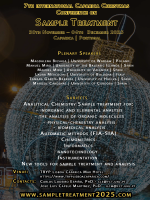Cellular Protein/Peptide Expression Profiles (PEPs): an alternative approach for easy identification of cyanobacterial species
DOI: 10.5584/jiomics.v3i2.138
Abstract
Cyanobacterial harmful algal blooms (CyanoHABs) are recognized as an expanding and serious global problem that threatens human health. Timely and accurate identification of cyanobacteria is of vital importance for public health. Morphologic characteristics of cyanobacteria have been used for classical taxonomic studies and identification purposes. However, misidentification may occur either due to subjective judgment by the operators or inability to recognize natural variations of morphotypes. To circumvent problems of morphology-based identification methods, we reported previously a rapid and simple method for the identification of dinoflagellates using protein/peptide expression profiles (PEPs) of whole cell protein extracts generated by MALDI-TOF-MS (Lee FWF et. al., 2008). In the present study, we applied this method in the identification of harmful cyanobacteria. Our results showed that various species of the cyanobacteria can be easily distinguished from each other using their PEPs.









